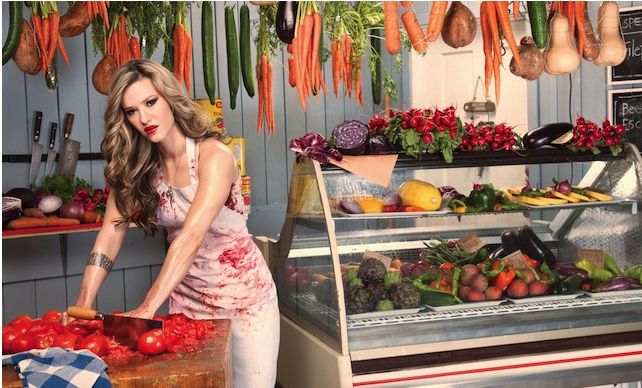our favorite finds from the front lines of food
You think those little individual K-Cups of coffee are cute, do you? Sure, this little video is just a dramatization of what could happen. That's what you think now. But it's time to kill the K-Cup before the plastic wins. Don't say you weren't warned. (NPR)
New York’s Health Department Wants to Freeze All of Its Sushi An attack on authenticity? Good public heath sense? Other states already do it. (Munchies)
Relax, people. You are the boss of your food. Stop being afraid of it. We’re "clean eating" our way to new eating disorders. Is orthorexia about to join the DSM? (Salon)
We see perfect produce. He sees pain and danger. How the produce aisle looks to a migrant farmworker. (PRI/The World)
Bad for fish and bad for people: Meant to Keep Malaria Out, Mosquito Nets Are Used to Haul Fish In (New York Times)
A Compound in Beer Might Save Your Brain from Degeneration "The beneficial compound is a flavonoid called xanthohumol, which is found in hops (and thus, in beer)." (Munchies)
If that inspired you to get your geek on, and throw around doozies like oxidation and red anthocyanin molecules, we've got you covered. Everything you ever wanted to know about cork, but were afraid to ask. A Chemist Explains Why Corks Matter When Storing Wine (Wine Folly)
What does a fictional world taste like? Londoners will get a sample as a Game of Thrones pop-up restaurant offers a taste of Westeros. How about a sample of a dish called: “The Lies of Tyrion Lannister and his Proclaimed Innocence” which happens to be poached veal tongue with beetroot, horseradish and Oldtown Mustard”. (Guardian)
And if you think that sounds unappealing, how about beer made from treated waste water? A trial of home brewers and one commercial brewery in Oregon are giving it a go. "Clean Water Services spokesman Mark Jockers said his company is the top provider of recycled water in Oregon. Its high-purity water treatment system turns sewage into water that meets or exceeds all drinking water standards." Want a cricket burger to go with that? (NPR)
Will fish be the next up and coming fake meat? Sounds pretty good compared to "recycled" beer, right? (NPR)





